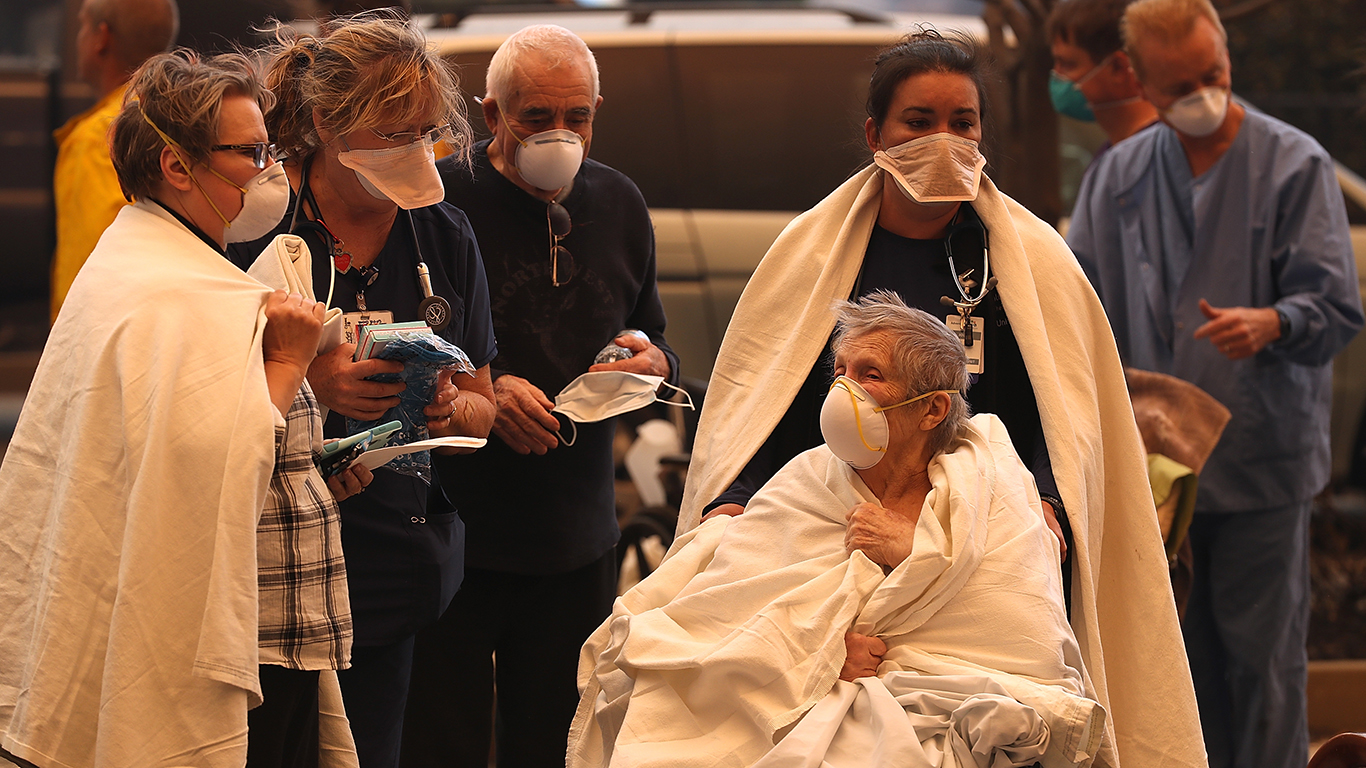
From food recalls to soaring rates of depression, it has been a scary year. The year 2018 saw a number of new emerging and unprecedented health risks, such as a rare polio-like virus striking children and California’s devastating wildfire seasons.
Public health is defined as the health of the population and the communities where they live, work, learn and play. These populations can be as small as a neighborhood or as big as an entire country. Outbreaks, epidemics or clusters all pose a threat to people, even if it’s a small group; therefore, they are a public health concern.
They change over time. HIV and teen pregnancy were listed as public health problems in the past. But teen pregnancy has been on the decline since 2007, hitting a record low in 2015, and the estimated number of annual HIV infections went down by 8% from 2010 to 2015.
Other problems are persistent, even though some progress has been made. “Fewer people die of cancer because treatments have gotten better and more sophisticated, but we still get a lot of cases,” Dr. Gregory Gelburd, a family practice physician in Charlottesville, Virginia, said.
To identify some of the biggest public health concerns of 2018, 24/7 Wall St. consulted experts, reviewed media reports and data from health, food and regulation agencies such as the Centers for Disease and Control Prevention (CDC) and the Food and Drug Administration (FDA).
Click here to read about the biggest public health problems of 2018.

1. Opioid overdose
More than 115 people in the United States die every day from opioid overdoses, according to the National Institute on Drug Abuse. The problem of substance use disorders related to prescription pain relievers, heroin, and synthetic opioids such as fentanyl was declared in October 2017 a national crisis and public health emergency under federal law.
[in-text-ad]

2. Major depression
“This is a serious problem we don’t have a handle on,” Dr. Gregory Gelburd, a family practice physician in Charlottesville, Virginia, said. The number of people with major depression increased by 33% between 2013 and 2016.
This rate is even higher among millennials (47%) and adolescents (47% for boys and 65% for girls). And this data, which is based on 41 million health records, covers only people with Blue Cross Blue Shield Insurance, which means the real numbers are may be higher.

3. Suicide
Suicide rates have been rising in nearly every state. It is now the 10th leading cause of death in the country and is one of just three leading causes that are on the rise. “We are not quite sure why suicide is up, but it appears to have something to do with people feeling more isolated,” Gelburd noted. “Rates also continue to climb among veterans from all wars.”

4. Obesity
Obesity in America is not a new problem, but rates are going up, with adult obesity rates reaching 35% in seven states, 30% in 29 states and 25% in 48 states. “We are not treating it as a disease, which it is,” Gelburd said. “We still blame people for being obese when it is actually such a complicated problem.” For example, certain bacteria in the gut is found in obese people and not in thin individuals, and overweight people don’t have as many receptors in the body for the hunger hormones in the stomach, which signal the brain you are full, he noted. “Depression and isolation are also known to lead to overeating.”
[in-text-ad-2]
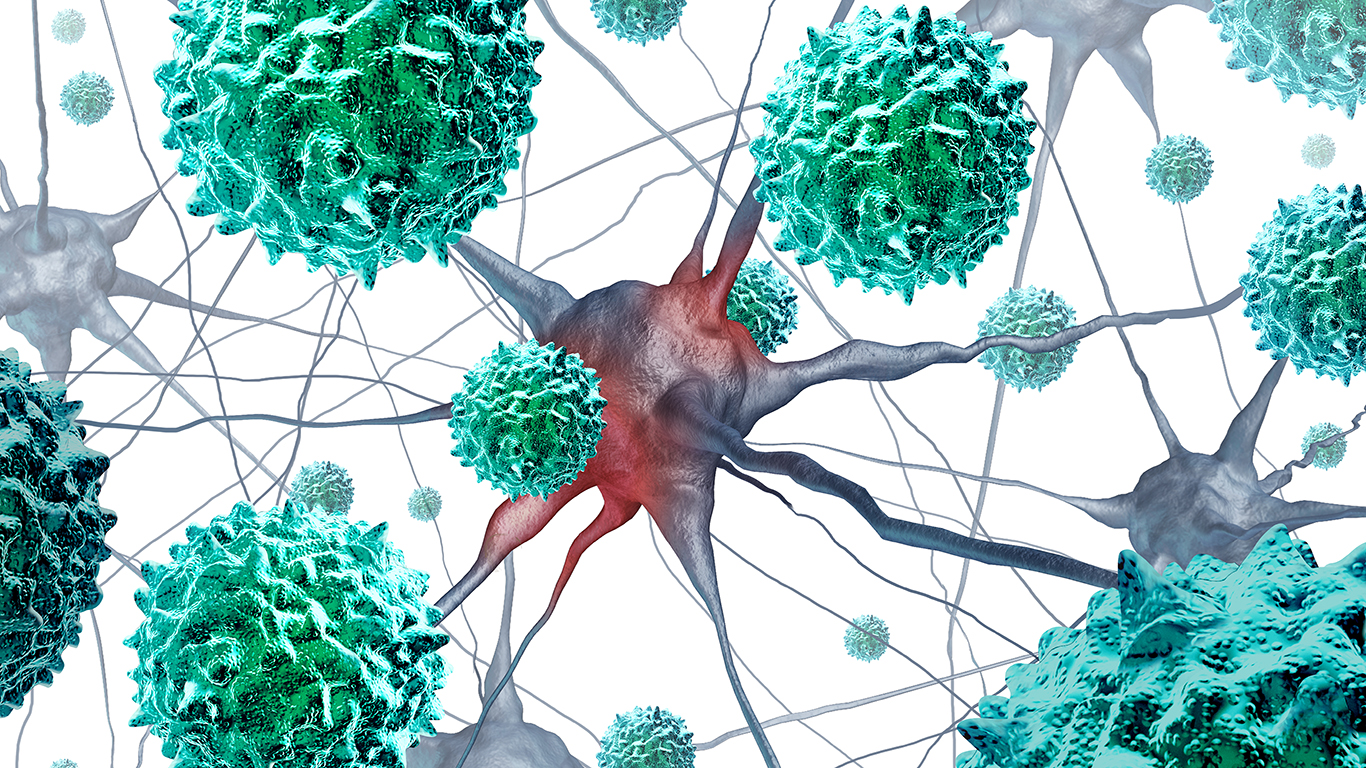
5. “Polio-like” virus
Acute flaccid myelitis (AFM), more commonly referred to as “the polio-like virus,” scared the country in 2018, with 134 cases confirmed in at least 33 states up to December, and 165 patients being tested for the virus. Most of the affected are kids under 4 years old.
This is the third wave of AFM to occur in the country since 2014. The rare virus causes partial paralysis, and experts are not sure what exactly causes it. There is no specific treatment for the virus.

6. Gun violence
Massacres such as the Santa Fe high school shooting, Pittsburgh synagogue shooting, Thousand Oaks bar shooting, and others seem to have become weekly occurrences in the United States. And yet mass shootings represent a tiny fraction of gun violence reported across the nation. There were nearly 53,000 incidents involving a gun between January 1 and December 5, 2018 in the United States; 325 of them have been mass shootings, according to data from the Gun Violence Archive. Almost 14,000 people have died, including 621 children and 2,617 teenagers. At the end of May, CNN reported that, on average, there had been one school shooting a week in 2018. About 42% of Americans live in a household with a gun. America’s rate of murder or manslaughter by firearm is the highest in the developed world.
[in-text-ad]

7. Adolescents and vaping
The use of e-cigarettes among teenagers has soared in 2018. The percentage of high school students who have vaped in the last month is up to 75% from 2017. “The nicotine in vaping may be less, but it’s still toxic,” Gelburd said. “It can still lead to cancer, heart disease in adulthood, and a desire to smoke regular cigarettes.” The flavors make it seem like candy, but this is just a mask to a dangerous product,” he noted.

8. Salmonella
From tahini, ground beef, turkey, chicken to pre-cut melon and eggs — food recalls have been the talk over the last few months. “Part of the problem is industrialization of food,” Gelburd said. “We need more regulation.” In a recent outbreak this year, Salmonella, an infection caused by contaminated food or water, made close to a hundred people sick across 29 states, most of which are on the East Coast. Symptoms include diarrhea, fever and stomach cramps.

9. E.coli infections
Health and regulatory agencies are investigating a multi-state outbreak of Escherichia coli, also known as E. coli, linked to romaine lettuce grown in northern and central California. As of November 26, 2018, 43 cases of E. coli infection have been reported in 12 states.
[in-text-ad-2]
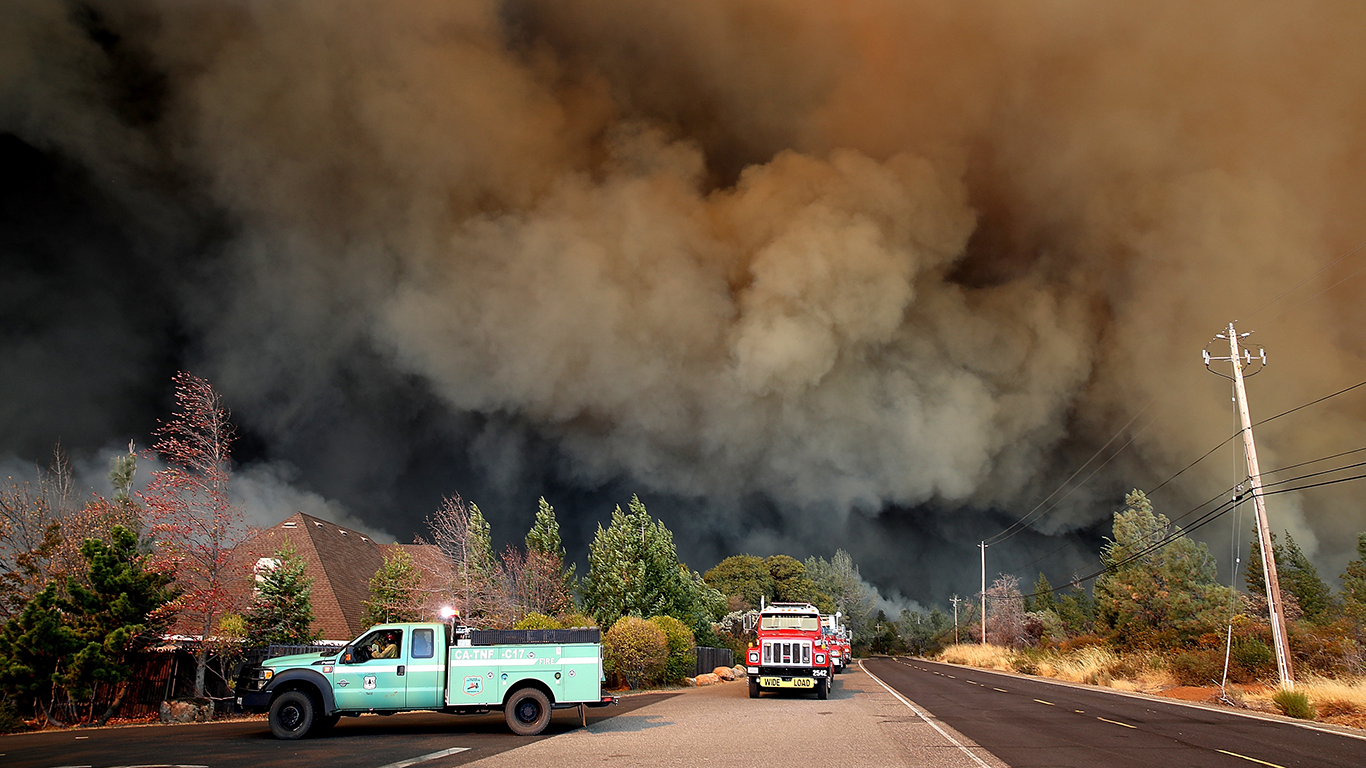
10. Air quality and toxic smoke
The fires in California this year broke records. Three of them were burning at the same time in August, damaging more than 820,000 acres — double the amount of land burned by mid-2017. The recent Camp Fire complex was the deadliest in state history, killing at least 88 people, with many more still unaccounted for.
The toxic smoke from the fires, thick with soot and other particles, pollutes the air and causes health concerns, especially for people with respiratory problems such as asthma or bronchitis. Wind and lack of rain helped wildfire smoke to float 3,000 miles away all the way to New York.
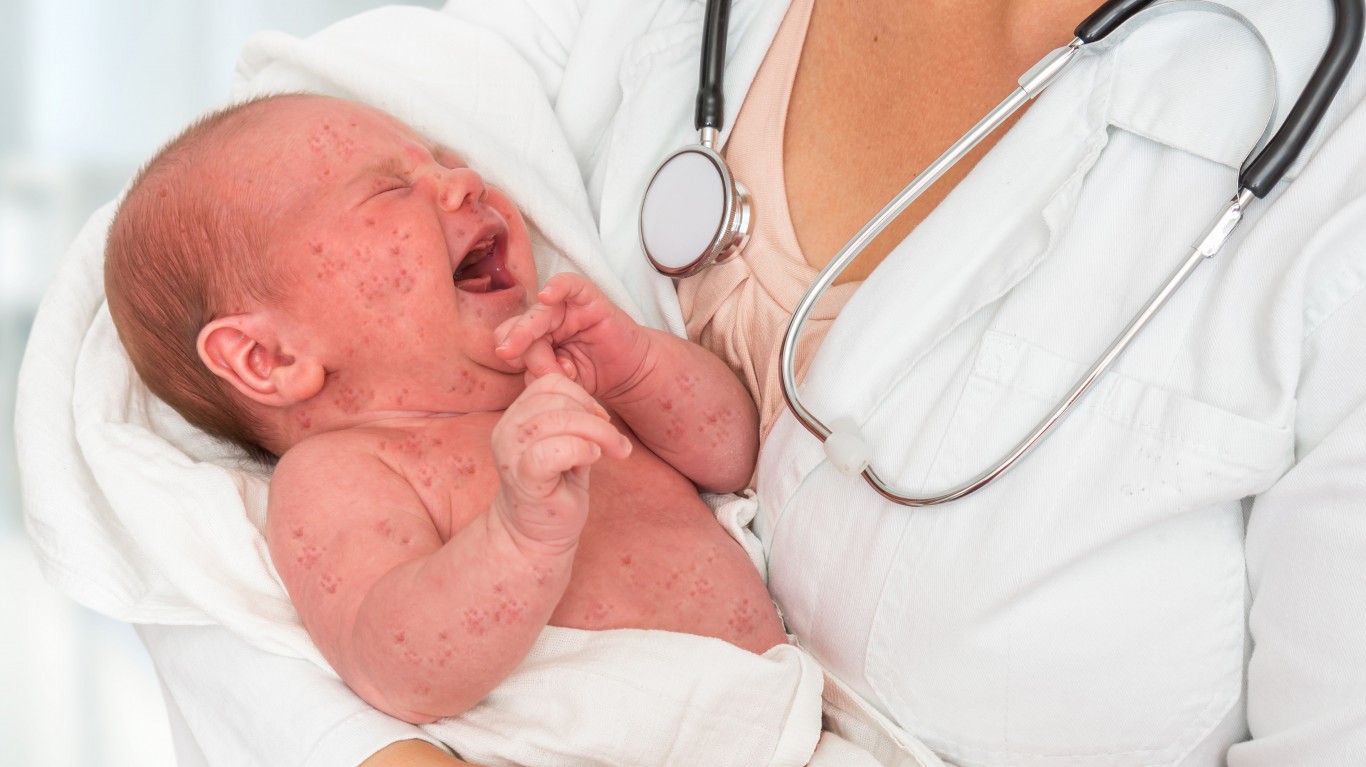
11. Measles
As of November 3, 2018, 220 individual cases of measles have been confirmed in 26 states and the District of Columbia. This is more than the total of every year since 2010, except for 2014 when 667 cases of the viral infection were confirmed. It’s so contagious because it spreads through the air via coughing and sneezing. A measles outbreak has been raging in Europe, with more than 41,000 infected up to July alone. Most of the people who got measles, both in the U.S. and Europe, were not vaccinated.
[in-text-ad]
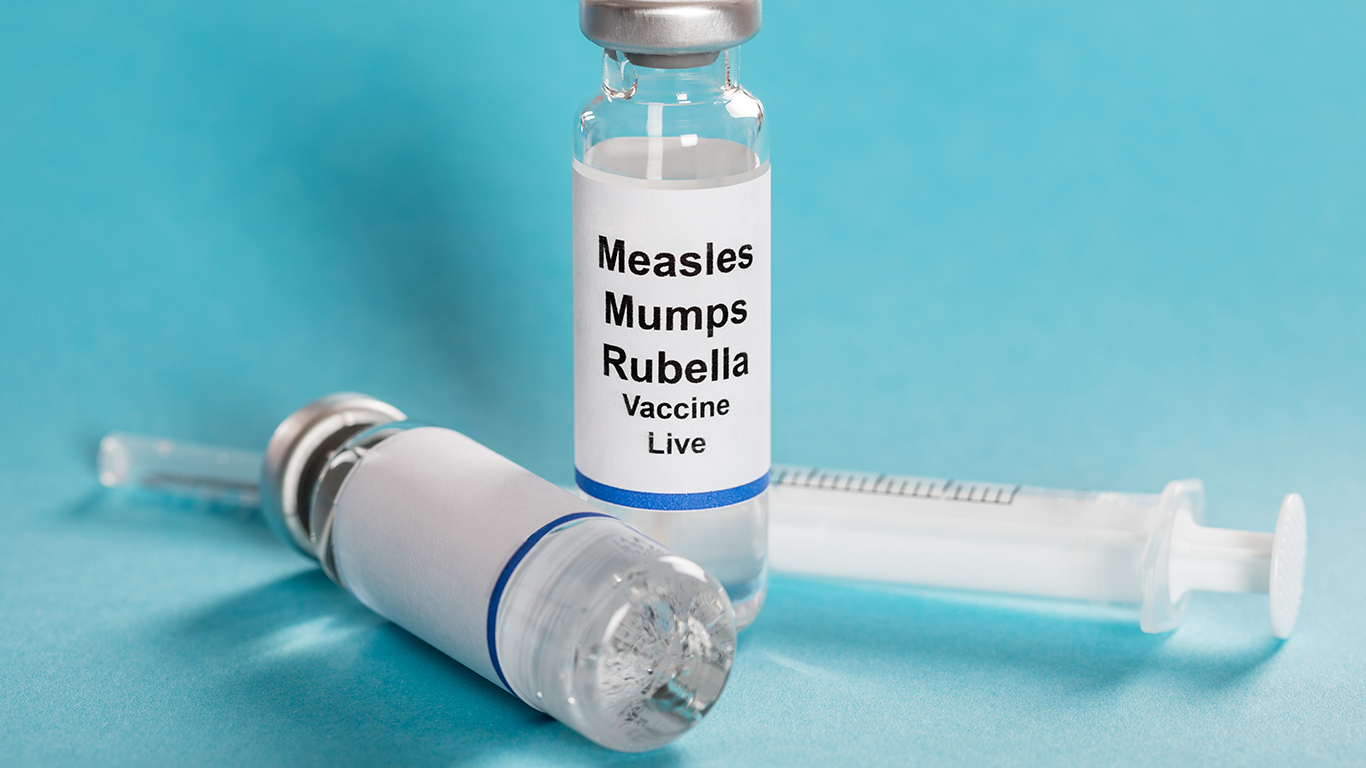
12. Surge in anti-vaccination movement
Opposition to vaccines is not a new phenomenon, but recent research shows it is on the rise, specifically against the MMR (measles, mumps, and rubella) vaccine. Part of the reason for the increased opposition is that a lot of information — some of which is not verified in any scientific way — is accessible to the layman, shifting power from the doctor to the patient.

13. Heart disease
Cardiovascular disease is still the No. 1 killer in America. As the underlying cause of death, it accounts for about 850,000 deaths in the United States alone — about 1 of every 3 deaths. Nearly 2,300 Americans die of heart disease every day; on average, this is one death every 38 seconds.
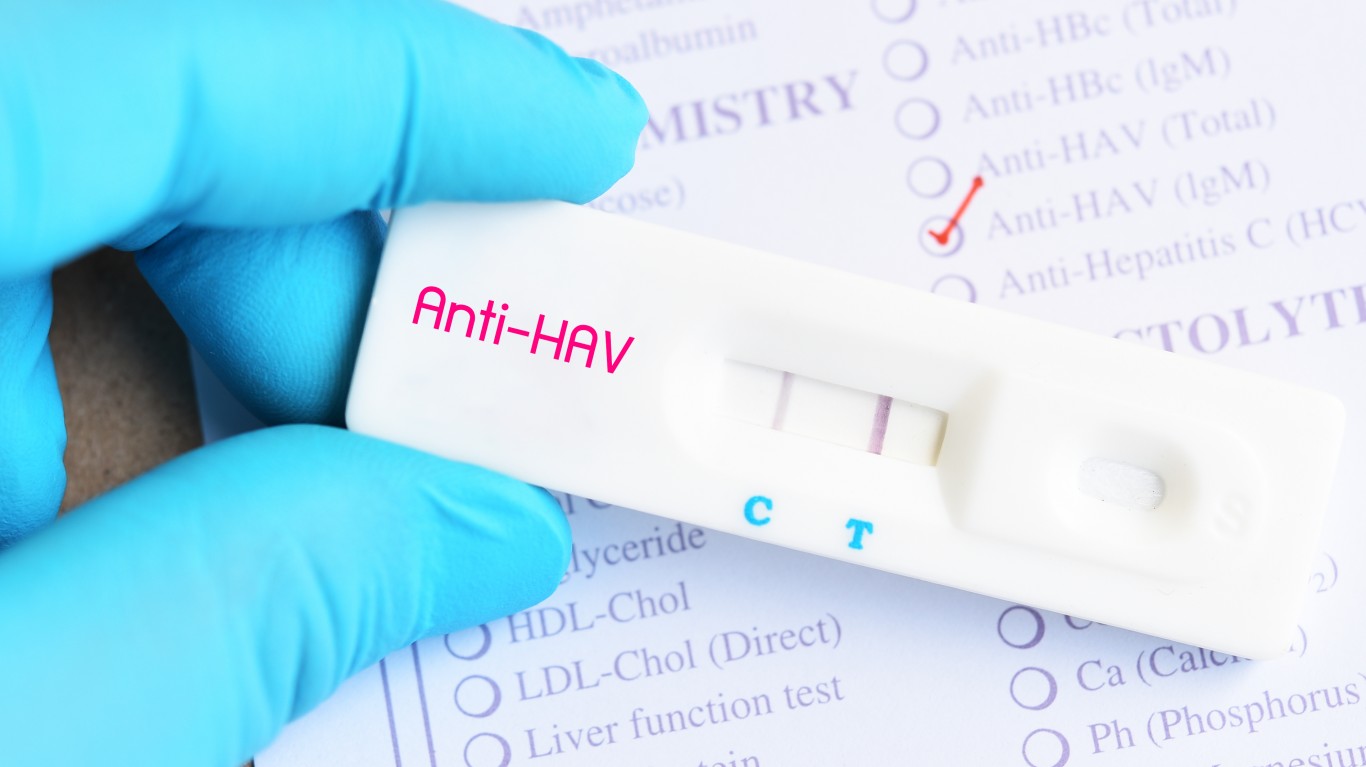
14. Hepatitis A
More than 2,500 cases of hepatitis A were reported to the CDC between January 2017 and June 2018. The vaccine-preventable, highly contagious liver infection is most common among homeless individuals and people with substance use disorders. Most of the cases are in the Midwest — Michigan, Indiana, Ohio — and some states in the South — Kentucky, Tennessee, Arkansas and North Carolina.
In 20 Years, I Haven’t Seen A Cash Back Card This Good
After two decades of reviewing financial products I haven’t seen anything like this. Credit card companies are at war, handing out free rewards and benefits to win the best customers.
A good cash back card can be worth thousands of dollars a year in free money, not to mention other perks like travel, insurance, and access to fancy lounges.
Our top pick today pays up to 5% cash back, a $200 bonus on top, and $0 annual fee. Click here to apply before they stop offering rewards this generous.
Flywheel Publishing has partnered with CardRatings for our coverage of credit card products. Flywheel Publishing and CardRatings may receive a commission from card issuers.
Thank you for reading! Have some feedback for us?
Contact the 24/7 Wall St. editorial team.
 24/7 Wall St.
24/7 Wall St. 24/7 Wall St.
24/7 Wall St.



